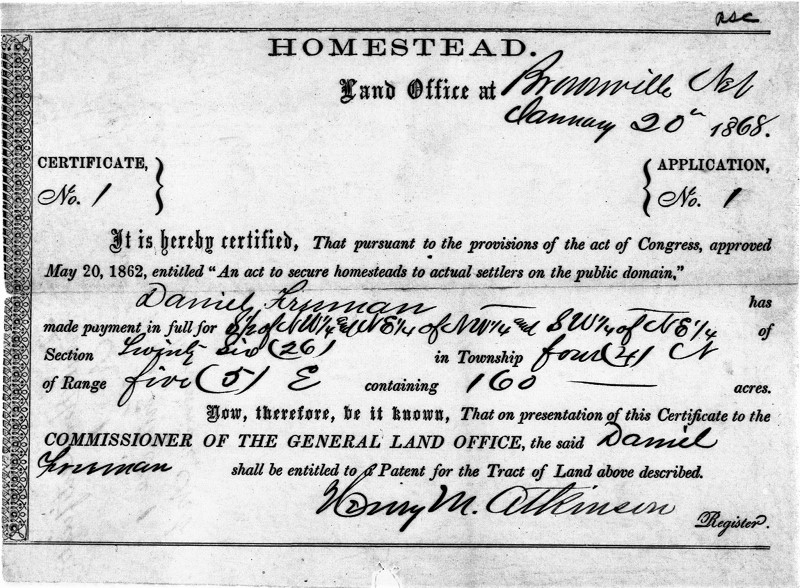The Homestead Act of 1862
The Homestead Act of 1860 was created by Congress in 1860 because they wanted to encourage people to settle on federally owned lands in the west. President Buchanan, a Democrat, vetoed the bill because it was opposed by Southern Democrats who wanted western properties to be available for acquisition by slave owners. Congress enacted the Homestead Act of 1862 after the Southern states declared their secession and Lincoln supported the idea. On May 20, 1862, Lincoln officially signed the bill into law. The largest land giveaway in history may have resulted from it. The act resulted in the free distribution of about 10% of the country's land to eligible individuals.
The requirements weren't all that strict. As long as a person had not used force against the United States and was at least 21 years old or the head of a household, they were eligible. He was granted a patent for 160 acres, largely in the west, in exchange for his commitment to settling on and improving the land. Families with multiple adults could each claim a separate patent, adjacent to their siblings' possessions. Other than expenses for transportation, building, farm machinery, livestock, and so on, there was only a filing fee. The homesteader might receive title and land ownership after fulfilling the period of the homestead requirement, often 20 years.
Through 1.6 million homesteads, the federal government transferred approximately 270 million acres of property to private hands. The wide-open spaces of the west gave rise to the farms of today. Homesteading persisted in the lower states up until 1976 and for an additional ten years in Alaska. The Homestead Act was later imitated in Canada, Australia, and New Zealand. Throughout its lengthy tenure in effect, it underwent numerous amendments and adjustments.












